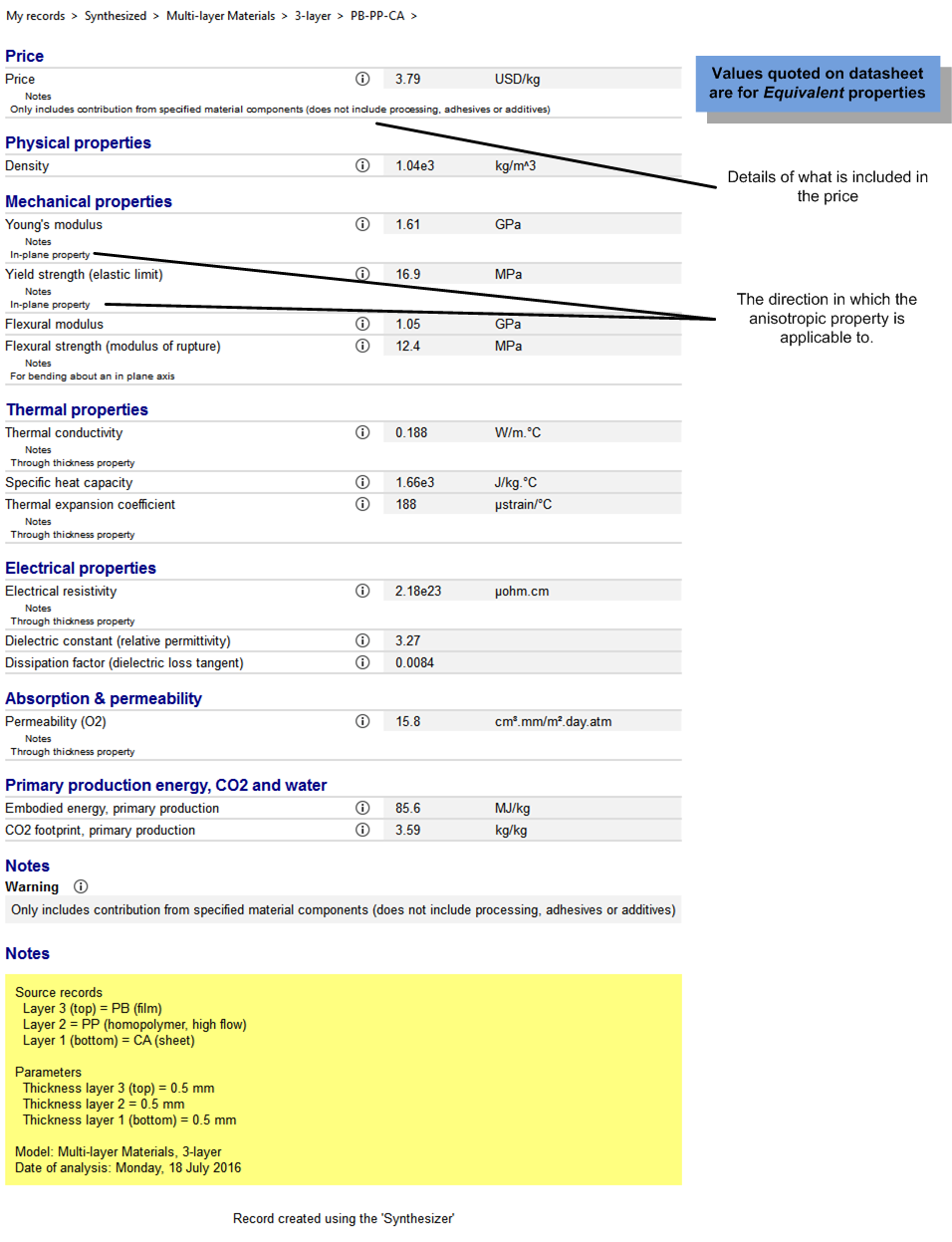
The Multilayer Materials models predict the performance of laminates constructed from a range of materials, thicknesses, and numbers of layers. These models are particularly relevant to multilayer barrier laminates used in packaging.
The aim of multilayer material design is to combine the properties of different materials into one structure. For example, to combine the strength and stiffness of one material with the permeability of another material, to produce a multilayer material that is stiff, strong, and has a low permeability to air or water.
The relative position of the different layers can have a significant impact on the performance of the final laminate. For example, under bending, the bottom surface is subjected to tensile loads and the top surface to compressive loads. These loads, which are at a maximum at the outer surfaces, reduce to zero at the neutral axis. In contrast, shear loads, which are zero at the outer surfaces, reach a maximum at the neutral axis.
The level of shear loading is typically an order of magnitude lower than the tensile/compressive loads at the outer surfaces, and so the flexural performance of multilayer laminates is generally dictated by the tensile and compressive properties of the outer layers. This is one of the reasons why EVOH (ethylene vinyl alcohol), which is an excellent barrier to oxygen, is often used as the central layer in multilayer flexible packaging where its relatively high stiffness has minimal influence on the flexibility of the final laminate.

Click on Synthesizer on the
main toolbar and under ![]() Multi-layer Materials, click one of the models:
Multi-layer Materials, click one of the models:
To select materials for each layer, click . This displays the full MaterialUniverse tree for the active database. Browse the tree, highlight the material of interest and click .
The order of materials is important (i.e. which face is the top material and which the bottom) as the multilayer will be anisotropic. The calculations for flexural modulus and strength assume that Layer 1 is the bottom layer and that when loaded the top face is in compression and the bottom face in tension.
For each Layer, type a Thickness. The current units are shown to the right of the box.
For each Layer, type an abbreviated name. For example, if Layer 2 is Polypropylene, type PP. These are used to create the record names for the new multilayer materials.
The synthesized records can be plotted on a chart for easy comparison with existing materials in the database.
